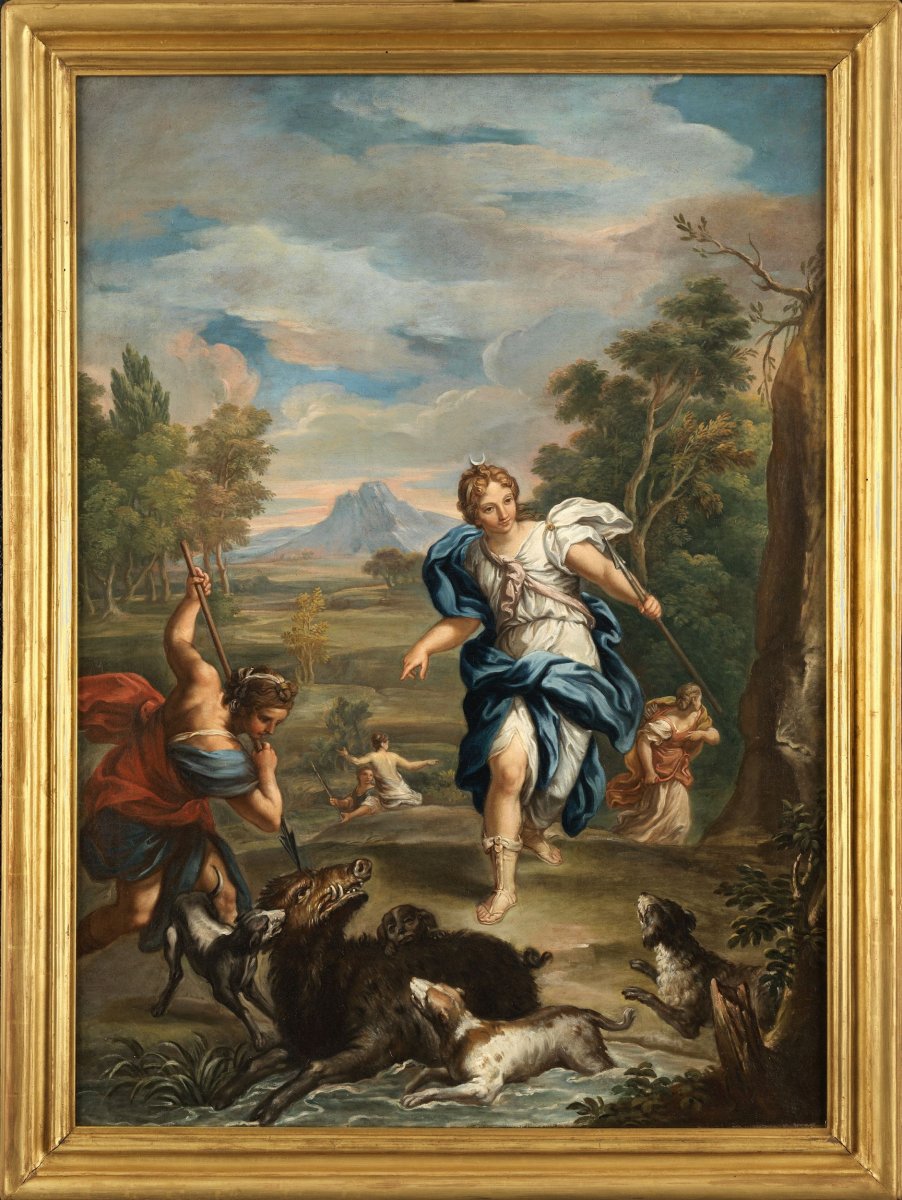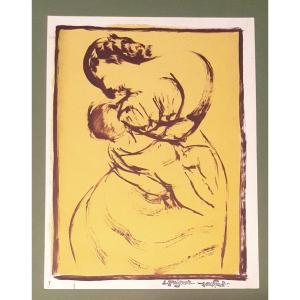It is not a Diane at rest, nor a Diane in the bath that the painter of our painting chose to represent, but indeed a Diane huntress, in full action, in a surprising balance, of infinite grace. Daughter of Jupiter and Léto, twin sister of Apollo, Diane (Artémis) is one of the twelve divinities of Olympus. Living in the forests, fleeing from men, this virgin goddess is surrounded by her chaste companions. It is easy to identify it as much by the composition of the painting which revolves around its strong and dynamic presence as by the crescent moon with which it is crowned.
Her hunting activity is confirmed with the spear which she brandishes not without ardor with her left hand, with the dogs smelling the prey at the moment when one of her companions is about to slaughter the boar. While this scene where a dramatic intensity pierces takes place very close to her, Diane appears conquering, graceful and delicate, one foot lightly placed on the ground.
While in the distance, we see other nymphs also busy hunting, the landscape with its trees offering a beautiful diversity of greens, the bluish mountain, the sky with blue and pink tones, plant an idyllic setting.
The work is superbly highlighted by its Italian carved and gilded wooden frame of the time.
Dimensions: 108 x 79 cm the view - 125 x 95 cm with the frame
Giovanni Odazzi (Rome 1663 - Id. 1731) is a Roman painter who first enters the workshop of the sculptor Cornelis Bloemaert then joins that of Ciro Ferri. During his apprenticeship, he acquired mastery of drawing and fed on the painting of Pierre de Cortone who was the master of Ciro Ferri. He completed his training in the studio of Giovanni Battista Gaulli dit Il Baciccio on the death of C. Ferri. At the threshold of the 18th century, Giovanni Odazzi, who was then a fully mature artist, produced the fresco The appearance of the Virgin at Saint Bruno in the church of Santa Maria degli Angeli (1699-1700). This work operates the synthesis between Ferri, Gaulli and the classic style of Carlo Maratta.
The period of the Counter-Reformation imposed religious works glorifying the saints, marked with devotion and mysticism. G. Odazzi, whose reputation quickly consolidated, worked in a number of churches in Rome. While Il Baciccio painted in 1707 in the central nave of the Basilica of the Holy Apostles The triumph of the Order of Saint Francis, G. Odazzi renewed two years later with a strong personality the theme of the fall. This work, The Fall of Lucifer and the Rebel Angels, at the time very noticed, greatly strengthens his reputation. He also intervenes in several monasteries, Cistercians or Carthusian monks. Around 1722, he received orders to decorate Roman palaces. He can thus paint allegorical figures on ceilings and create mythological frescoes that trace faces with precision, revealing in the various compositions a variety of attitudes and gestures enhanced by the richness of the drapery.
























 Le Magazine de PROANTIC
Le Magazine de PROANTIC TRÉSORS Magazine
TRÉSORS Magazine Rivista Artiquariato
Rivista Artiquariato
